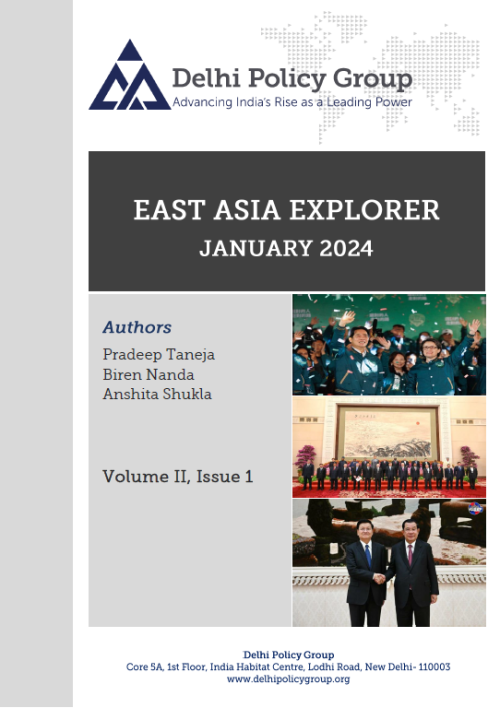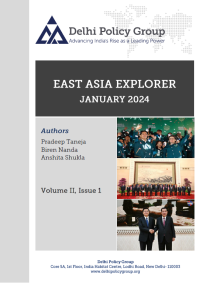East Asia Explorer
Date: February 06, 2024
The East Asia Explorer tracks evolving geopolitical trends, emerging security challenges, and progress towards regional integration in East Asia. It focuses on the ASEAN grouping, domestic and foreign policy developments in countries of East Asia and Oceania, great power contestation in the region, and India’s relations with ASEAN and its member countries.
In this issue, Dr. Pradeep analyses the mixed reaction of East Asian countries to the result of Taiwan’s presidential elections. He focuses primarily on the congratulatory messages conveyed by Taiwan’s neighbours in East Asia like Japan, South Korea and Singapore, which have traditionally maintained warm unofficial relations with the island. The author also highlights China’s response to these messages.
Amb. Biren Nanda analyses the competing connectivity initiatives in the Indo-Pacific. He compares the connectivity approaches of three countries: China’s Belt and Road Initiative, India’s Development Partnerships, and Japan’s Free and Open Indo-Pacific. The central question the paper aims to answer is: are the connectivity visions solely for the benefit of one or for the benefit of all?
Finally, Anshita Shukla assesses the roles and realities of small states, like Cambodia and Laos, in the ongoing great power competition between the United States and China. She highlights the inflow of investment in the region by China and the United States' limited engagement with the two countries. The paper uncovers the limitations of small, underdeveloped states to hedge amidst growing regional tensions.
To read this East Asia Explorer, Vol. II, Issue 1, please see the PDF attached.
In this issue, Dr. Pradeep analyses the mixed reaction of East Asian countries to the result of Taiwan’s presidential elections. He focuses primarily on the congratulatory messages conveyed by Taiwan’s neighbours in East Asia like Japan, South Korea and Singapore, which have traditionally maintained warm unofficial relations with the island. The author also highlights China’s response to these messages.
Amb. Biren Nanda analyses the competing connectivity initiatives in the Indo-Pacific. He compares the connectivity approaches of three countries: China’s Belt and Road Initiative, India’s Development Partnerships, and Japan’s Free and Open Indo-Pacific. The central question the paper aims to answer is: are the connectivity visions solely for the benefit of one or for the benefit of all?
Finally, Anshita Shukla assesses the roles and realities of small states, like Cambodia and Laos, in the ongoing great power competition between the United States and China. She highlights the inflow of investment in the region by China and the United States' limited engagement with the two countries. The paper uncovers the limitations of small, underdeveloped states to hedge amidst growing regional tensions.
To read this East Asia Explorer, Vol. II, Issue 1, please see the PDF attached.



